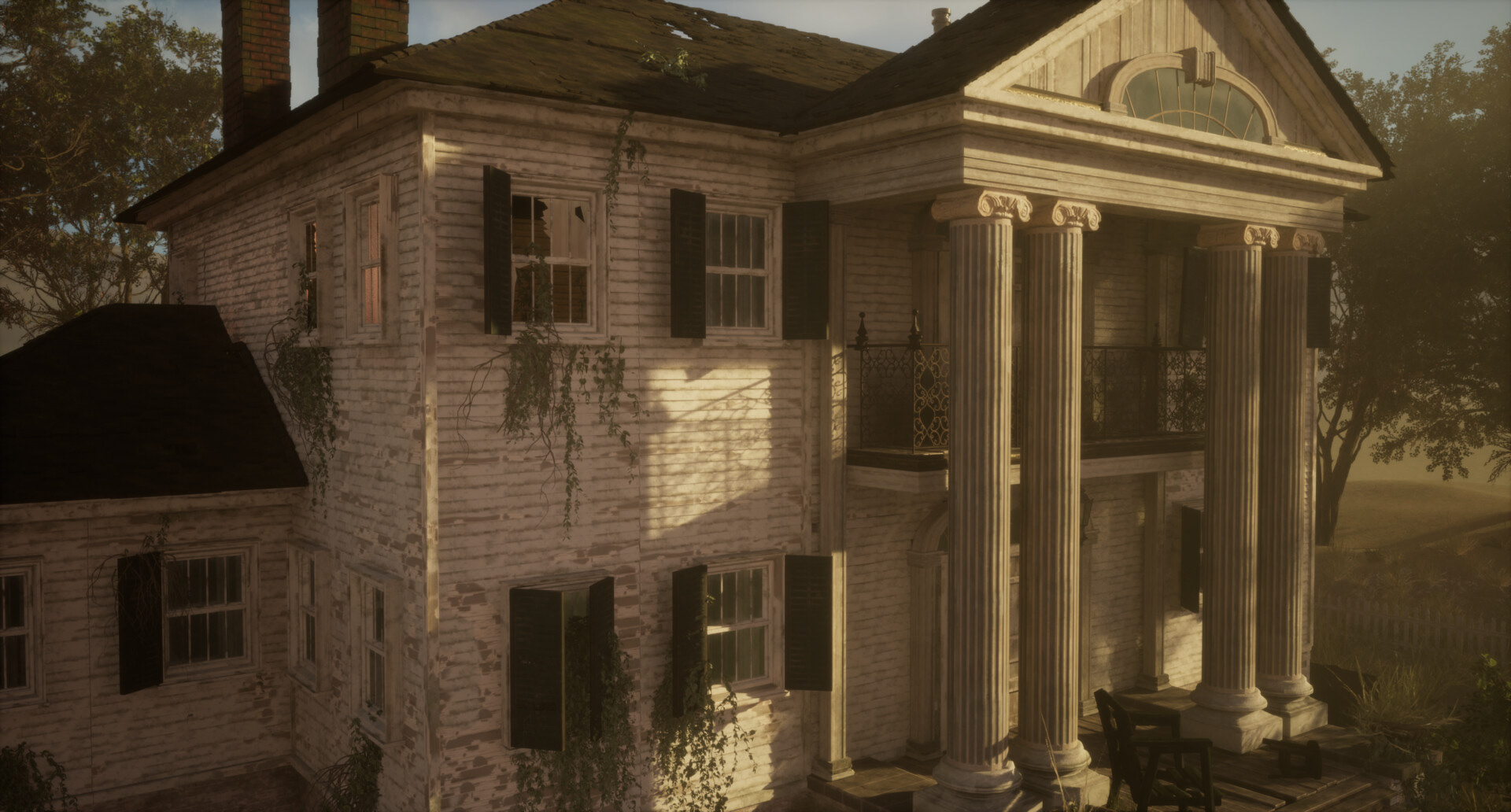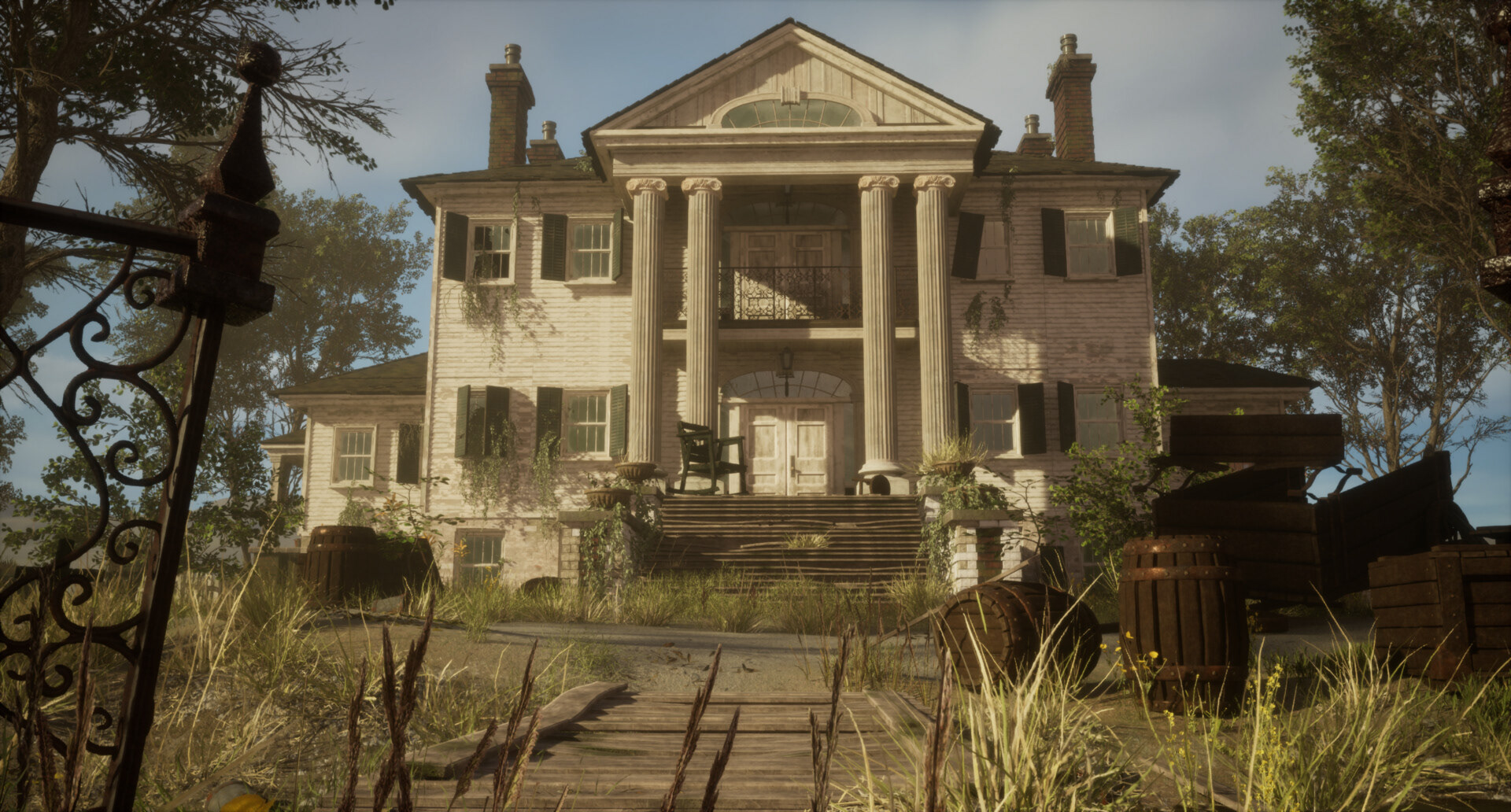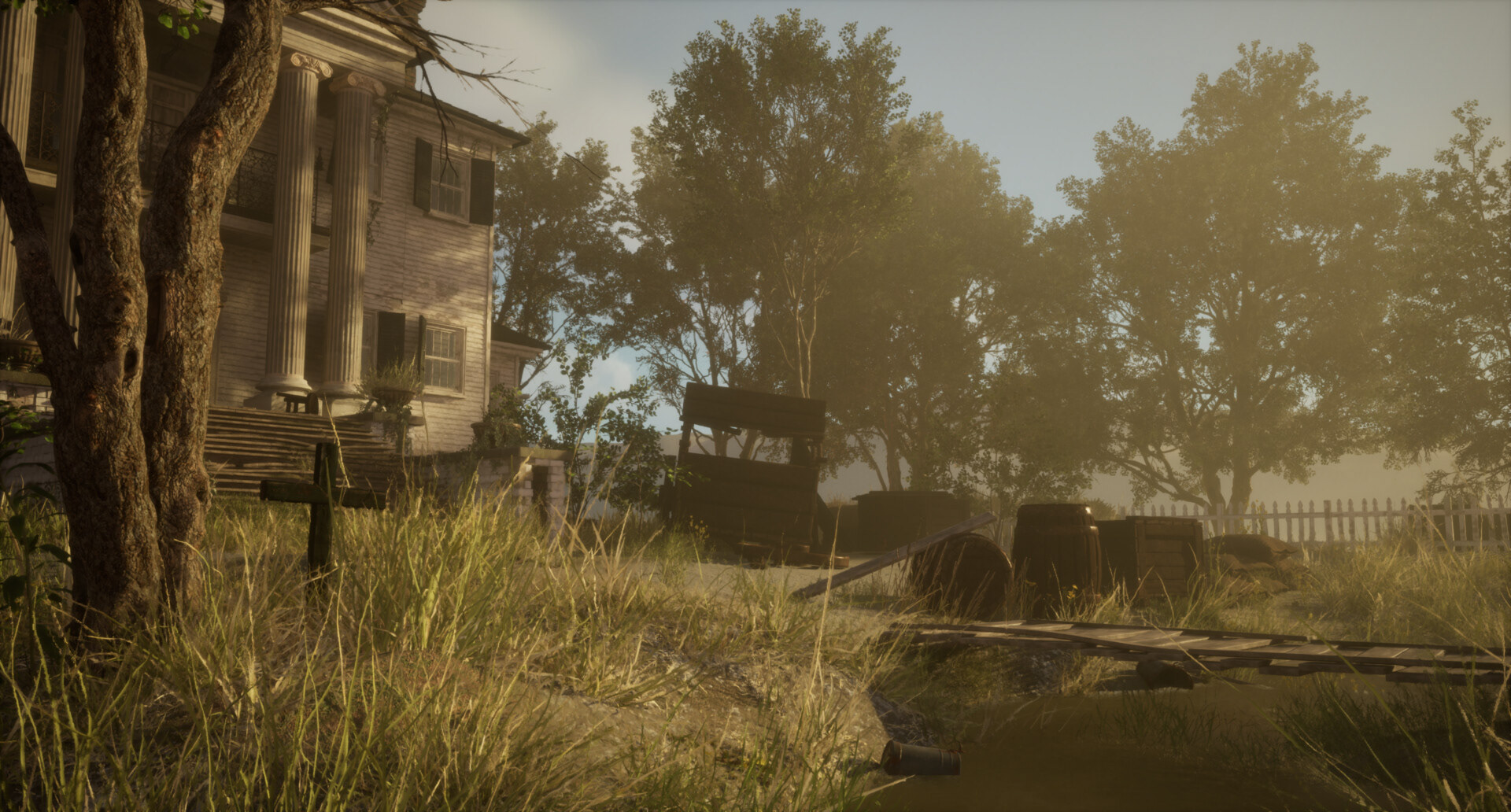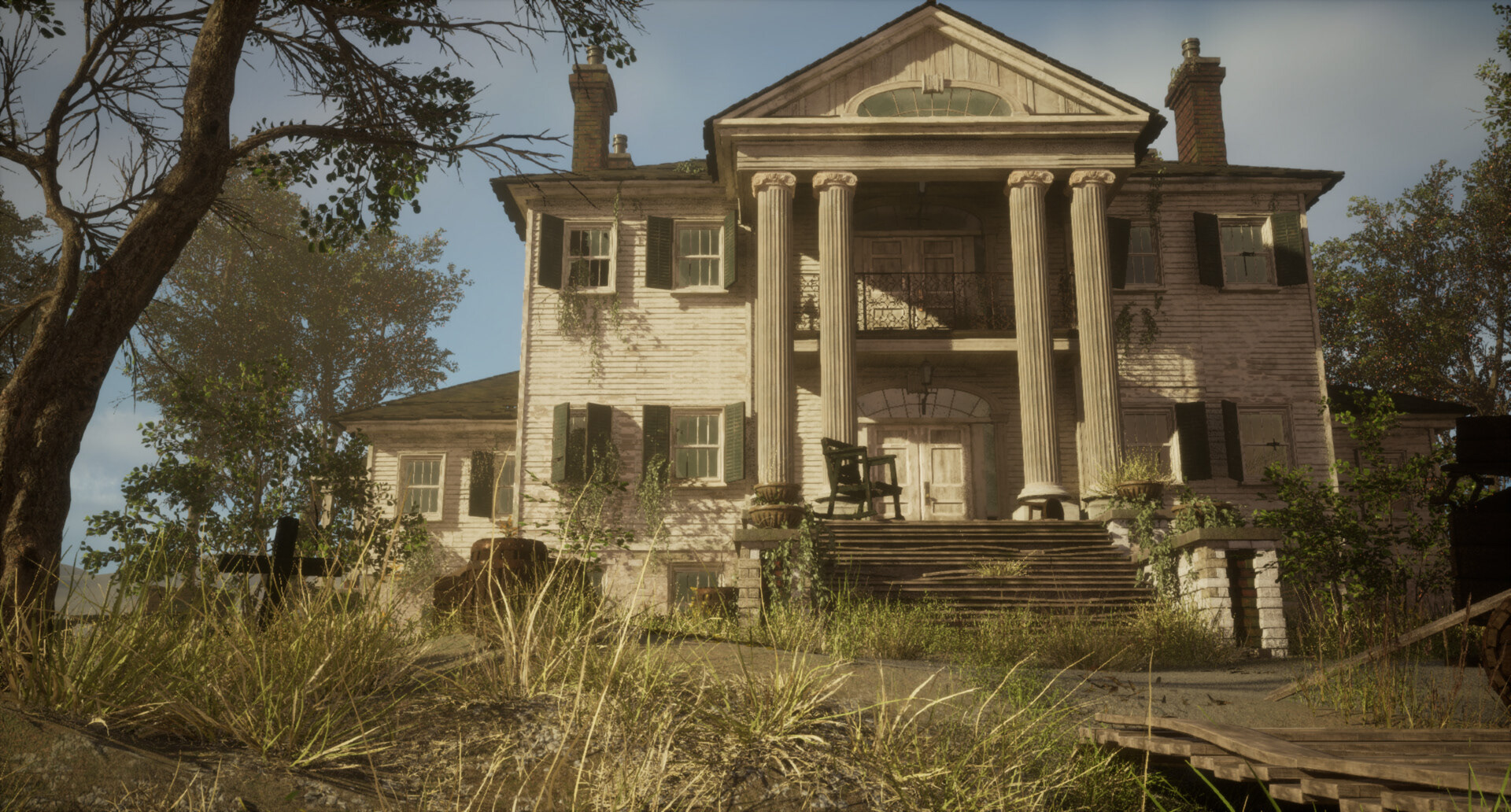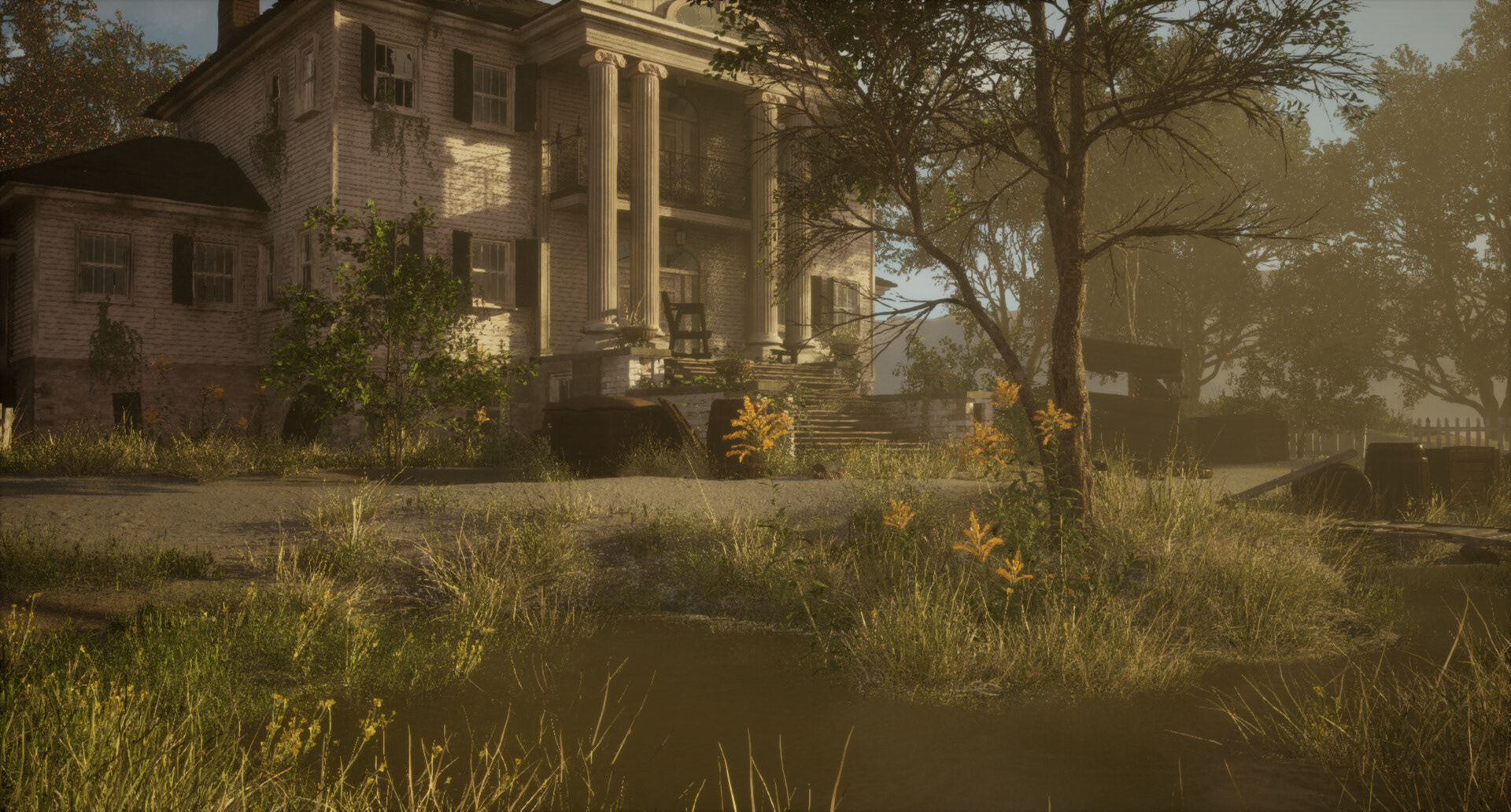Unreal Engine 5 environment scene loosely based on the Samuel Rockwell house, a Federal-Greek Revival historical building in Georgia, USA. I took some artistic liberties in re-interpreting the building in a more abandoned context, adding classic southern gothic features like the green window shutters and a water stream.
The real Rockwell House
Source: https://abandonedsoutheast.com/2019/03/06/rockwell-house/
Source: https://abandonedsoutheast.com/2019/03/06/rockwell-house/
Assets mostly created using the kitbash plank and brick kit I made, based on a couple of trim sheets and lots of layer blend painting. Foliage created using Megascan assets.
The process began with research and reference gathering. I knew I wanted to create a post-Civil War gentry estate. The mood I wanted to evoke was showing the impacts of societal collapse on a beautiful wealthy building. I looked at a lot of Southern Gothic photography and literary references to identify motifs/themes that my scene could showcase.
During this process I identified the Samuel Rockwell House as an appropriate building to base my architectural design off. In terms of visual style, I tried to mimic the production quality of Red Dead Redemption 2 and took cues from their lighting and prop choices.
MATERIALS
I wanted to maintain a consistent look across the props and house. From the outset, I figured that an efficient way to do that would be creating trim sheets and textures which could be used across both the props and the house construction itself. By studying the reference images above I managed to decide and plan three trim sheets to create to that would cover enough to create most of the scene's objects.
As shown below the process goes from plotting out a trim sheet in Photoshop. I then block the shapes out in Maya. Then I bring those shapes in ZBrush and sculpt details over the top of them. I then bake high poly details, and bring the maps into Quixel Mixer to add basic surface textures, and elements like dirt and wear using the baked curvature details. Sometimes I also bring the textures into Substance Painter to also paint on more details.
As shown below the process goes from plotting out a trim sheet in Photoshop. I then block the shapes out in Maya. Then I bring those shapes in ZBrush and sculpt details over the top of them. I then bake high poly details, and bring the maps into Quixel Mixer to add basic surface textures, and elements like dirt and wear using the baked curvature details. Sometimes I also bring the textures into Substance Painter to also paint on more details.


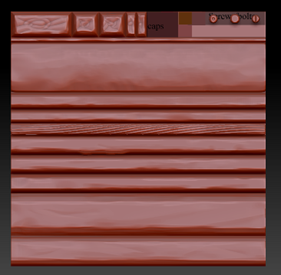

I then moved onto a second trim material, this time focussing on wrought iron parts and the green painted wood. This involved the same process, plotting it out in Photoshop, blocking out in Maya, sculpting extra details in Zbrush and then texturing in Quixel Mixer quickly at first and then adding fine details in Substance Painter. This process also included grabbing an alpha mask from Zbrush when sculpting the wrought iron fence parts.
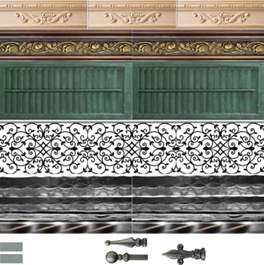

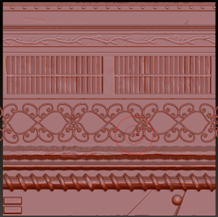



I used the wood and iron in the above trim sheets to create a wood planks kit, which was very useful in kitbashing a wide kit of western props.
There was some obvious material elements that I still needed to make before I could truly start constructing the house. There was the tiling shingle roof, a couple of brick materials and all the structural wood, pillar and other architectural pieces to the house.
So I went back to Photoshop to identify what materials were clearly repeating and could be deployed in a trim vs. tilable.


BLENDING MATERIALS
I created this third trim sheet in much the same way as other two ... with one major exception. Because the wood and plaster from this trim would appear repeatedly over the house, I needed variation and a way to communicate wear and decay. So I decided to create a two further variations to the material so that I could blend on mossy and stripped paint details (using vertex color painting in engine).
House column and crowning trim sheet with blend material variation.
Wood planks and stone trim sheet with mossy variation.
